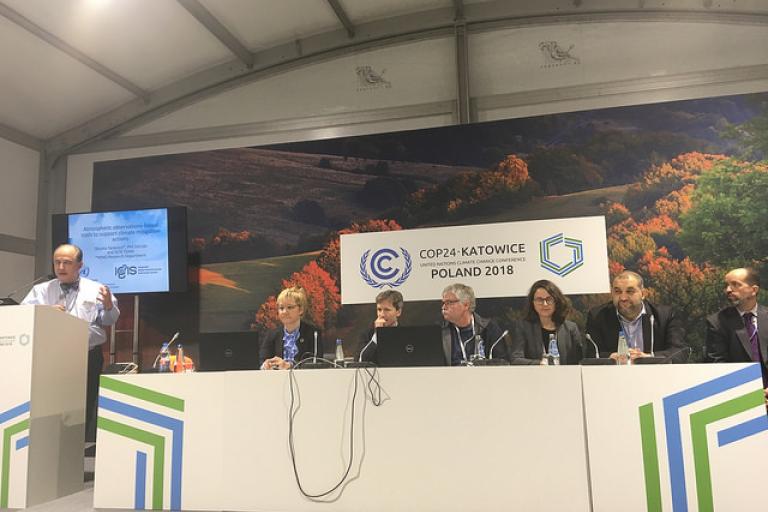Side event showcases IG3IS
Levels of heat-trapping greenhouse gases in the atmosphere have reached another new record high and emissions are expected to rise this year. Climate action to reduce emissions is therefore more urgent than ever and requires more tools at national and sub-national level to support effective and efficient actions.

Levels of heat-trapping greenhouse gases in the atmosphere have reached another new record high and emissions are expected to rise this year. Climate action to reduce emissions is therefore more urgent than ever and requires more tools at national and sub-national level to support effective and efficient actions.
Recognizing this need, WMO has initiated the development of observational based tools that can guide the emissions reduction actions and confirm their results, for instance in the oil and gas sector.
At COP24, WMO has been showcasing its new Integrated Global Greenhouse Gas Information System (IG3IS), which provides the framework for the development and standardization of the observational based tools. IG3IS is implemented by countries on a voluntary basis and will feed into the national emission reporting mechanism at COP.
“What happens if you are a national government seeking guidance on how to measure and monitor emissions. What do you do if you are not a national government but are an enterprise, or a city. Where will you find this information?” Oksana Tarasova, chief of WMO’s Global Atmosphere Watch Programme, told a side event co-organized with UNFCCC.
“Science can provide a solution,” she said.
The side event discussed how innovative observation based tools can allow stakeholders to Improve knowledge of national emissions and identify reduction opportunities. For instance, reducing methane emissions and leaks would have the equivalent impact of closing multiple coal-fired power plants. Cities currently account for 70 percent of emissions and so targeted reductions could turn cities into part of the solution.
The side event also heard examples of projects where these methods have been applied successfully, including measuring methane and CO2 in the United Kingdom and New Zealand.

